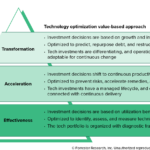Every year, Forrester surveys over 1,000 marketing decision-makers around the world to learn about their priorities, challenges, and plans. For the past few years, four forces – consumers’ dissatisfaction with invasive audience targeting, browser and operating system restrictions, legislators and de facto regulators like Apple limiting consumers’ trackability, and advertisers’ ceding control to walled gardens – have been top of mind.
These forces comprise data deprecation, which is intensifying. Marketers are responding in kind. Our global marketing survey reveals three trends.
More Marketers Are Taking Action
According to Forrester’s 2023 Global Marketing Survey, 12% of respondents agreed that “updating our data strategy to adapt to data deprecation” was the most important [priority] to [their] organization’s marketing strategy over the next 12 months. Now, per Forrester’s 2024 Global Marketing Survey, 21% of respondents claim that’s the case. This is not only because of Google’s ending third-party cookies in Chrome, but also because consumers demand more engaging advertising without sacrificing personally identifiable information.
For the clients we work with, updating their strategies also includes adapting measurement, resolving identities across channels and devices, gleaning zero- and first-party data, and developing more compelling creative.
There Is No Panacea For Data Deprecation
CMOs are testing a variety of solutions to data deprecation, which changes how consumers get addressed on their non-linear paths to purchase. For publishers, this is a blessing in disguise. According to Forrester’s 2023 Global Marketing Survey, the most common solution to data deprecation was “increasing investment in tech and partnerships for direct integrations and data access.” That solution has become even more common this year, according to our 2024 survey.
This forms and reflects the rising power of publishers, ranging from News Corp to Walmart, whose data access empowers them to define high-intent audiences. Walmart’s acquisition of Vizio, it bears mention, would strengthen the retailer’s ability to do so. Other solutions to data deprecation include “testing more context-based advertising,” “investing in more zero- and first-party data collection,” and “changing at least one AdTech vendor,” which are all costly but critical.
The Death Of Third-Party AdTech Is Nigh
Sixty-eight percent of marketers are “reevaluating [their] third-party data partnerships in light of data deprecation,” per Forrester’s 2024 Global Marketing Survey, which is up from 60% in 2023. Of the statements we asked respondents about third-party consumer data, they agreed with that one most.
Reevaluation means working more intensively with solution providers like Amazon, Google, Meta, Microsoft, and Yahoo, who offer proprietary, durable access to strong, first-party signals of consumers’ intent. However, working only with such providers is ill-advised, since their signals come at the expense of advertisers’ transparency and control. Therefore, per Forrester’s Q1 2023 B2C Marketing CMO Pulse Survey, 78% of US B2C marketing leaders use various DSPs to access open and closed ecosystems and leverage the range of addressability across the internet.
As data deprecation’s complexity and uncertainty compound, we’re here to help. Our forthcoming report on “The State of Data Deprecation, 2024” uses evidence from Forrester’s CMO Pulse Survey to highlight data deprecation’s effects and explains how US marketers are adapting. Towards the end of this year, my teammates and I will explain how advertisers can know their customers without cookies and, in a few weeks, I’ll provide a job description for the performance marketer of the future. If you’re interested in learning more, schedule time.








